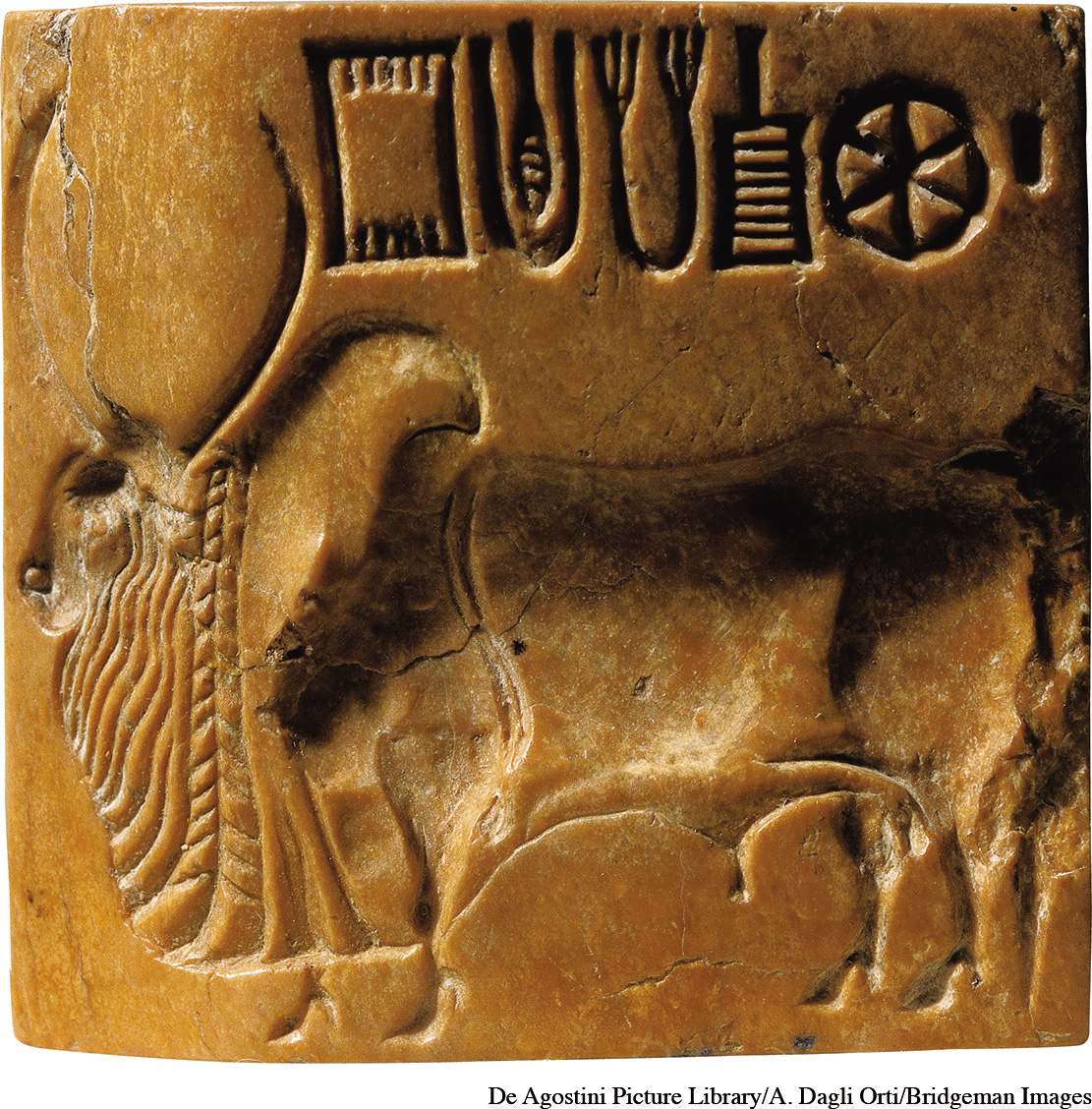Ways of the World with Sources
Printed Page 91
Source 2.1
A Seal from the Indus Valley
In many ancient and more recent societies, seals have been used for imprinting an image on a document or a product. Such seals have been among the most numerous artifacts found in the Indus Valley cities. They often carried the image of an animal—

- How might a prominent landowner, a leading official, a clan head, or a merchant make use of such a seal?
- What meaning might you attach to the use of animals as totems or symbols of a particular group or individual?
- Notice the five characters of the Indus Valley script at the top of the seal. Do a little research on the script with an eye to understanding why it has proved so difficult to decipher.